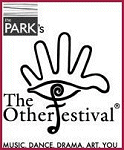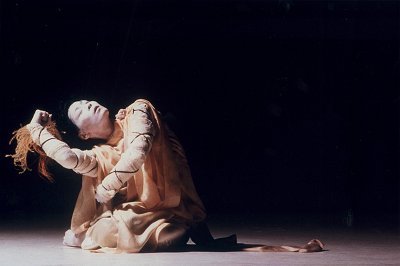| The Park’s
The Other Festival - 2004
Music. Dance. Drama. Art. You. The Chinmaya
Heritage Centre, Chennai
|
 |
FUJIWARA DANCE INVENTIONS (Canada), “Sumida River”, Contemporary Dance (Solo) (70mins)

Denise Fujiwara, one of the most diverse talents to evolve on the Canadian dance scene is choreographer, dancer, actor, teacher and artistic director. Her solo dance concerts have won her international critical and audience acclaim. “Sumida River” is the haunting tale of a woman in search of her stolen child. Created in the striking Japanese modern dance-theatre form, Butoh, Fujiwara dances a delicately nuanced performance of a mother's journey. Deeply moving and utterly compelling, Sumida River takes us on a journey of love and surrender. Internationally acclaimed Butoh choreographer Natsu Nakajima has created this spellbinding solo, a contemporary interpretation of the renowned 15th century Japanese Noh play especially for remarkable Canadian performer Denise Fujiwara. Based on Motomasa’s 15th-century Japanese Noh play Sumidagawa, the source for inspiration is the widely known and tragic legend of a mother whose kidnapped son never returns. In Fujiwara and Nakajima’s use of sacred movement and their internalized approach, some elements of Noh theatre remain. "It has a Noh structure of jo ha kyu," Fujiwara explains. "The work starts very slowly (jo) and increases in complexity (ha) and then continues to climax (kyu) before returning to jo in the fourth section – to bring the audience back and prepare them to leave the theatre. The rest, adds Fujiwara, is pure Butoh interpretation. Rather than recreating the play with traditional narrative, Nakajima has infused contemporary dance into the structure to convey the very essence of the story itself – the tragic inner journey of a mother who has lost her child. The results are strong images and almost athletic movement, with costumes that slowly evolve throughout and a broad sound combining eastern and western music. "The
intense emotional resonance of Denise Fujiwara's memorable, tragic solo
Butoh work ... incarnated everything dance can express and communicate
through the body where words cannot." Hour Magazine(Montreal).
|
| Exclusive
interview with Denise Fujiwara
by Lalitha Venkat Could you describe your first meeting with your mentor and acclaimed Butoh choreographer, Natsu Nakajima, who went on to choreograph “Sumida River” for you. I first saw Natsu Nakajima perform at the Festival International de Nouveau Danse in Montreal in 1986. I witnessed in her choreography and performance, a deep sophistication and maturity that spoke from a woman’s point of view. At that moment I knew that I had to study with her. It would be 9 years before this goal was realized. How did
you train under your mentor Natsu Nakajima? Was it a process of unlearning
and reinventing yourself?
Sumida River
is interpreted in the Butoh style, also incorporating the essence of Mai
- the sacred internal dance of Noh. Could you tell us about Noh and Butoh
as you practice it?
Natsu Nakajima was one of the first women involved in the Butoh movement. She was mentored by the two most important figures of Butoh, its founders Tatsumi Hijikata and Kazuo Ohno. She embodies Butoh in her dance. Like her teachers, she herself possesses a special genius as a choreographer and performer. It is a great honour to perform this work. You have
said it took you over 5 years to incorporate all the concepts Natsu Nakajima
taught you in “Sumida River”. How have your performances in this work evolved
over the years?
Is the term
Butoh now mainly used for ballroom dancing in Japan? Is "Ankoku Butoh"
the correct term used now in Japan?
How do you
intend to work with Indian dancers at your ten-day workshop in Chennai?
Do you anticipate any challenges?!
We’ll go on to apply this to the development of a short work of choreography. Challenges are an important part
of the creative and learning process. I expect we’ll meet our fair
share of them and that they will teach us a lot.
Contact:
|